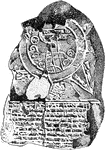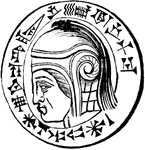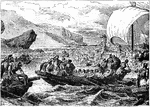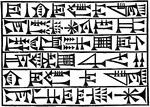Clipart tagged: ‘babylon’

Babylon
"Babylon is said, by some writers, to have owed its foundation to Queen Semiramis, a person whose history,…

Babylonia Poster
A poster of ancient Babylonia: Chaldea, Assyria, Persia, soldiers, religion, writing, and structures.

A Babylonian Map of the World
"A tablet of dark brown clay, much injured, dating from the 8th or 7th century B.C. The two large concentric…

Feloher from Nineveh
"One of an order of beings, the life-principles or geniuses or tutelary spirits of living beings, believed…

Griffin
In heraldry, the griffin is a fabulous animal, with the head and forefeet of an eagle, and the body,…

King Merodach-idin-akhi
An ancient Babylonian stone carving of King Merodach-idin-akhi, the Mesopotamian sun god.

Nebuchadnezzar
"The most illustrious of Babylonian kings, was the son of Nabopolassar, the general of the Babylonian…

Oannes
"The name of a Babylonian god, who, in the first year of the foundation of Babylon, is said to have…

Phoenician Fleet on a Voyage of Discovery
A large group of travelers in boats sailing on to the discovery of Lebanon.


